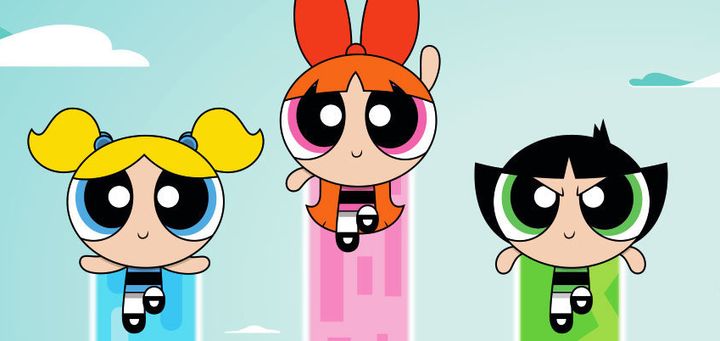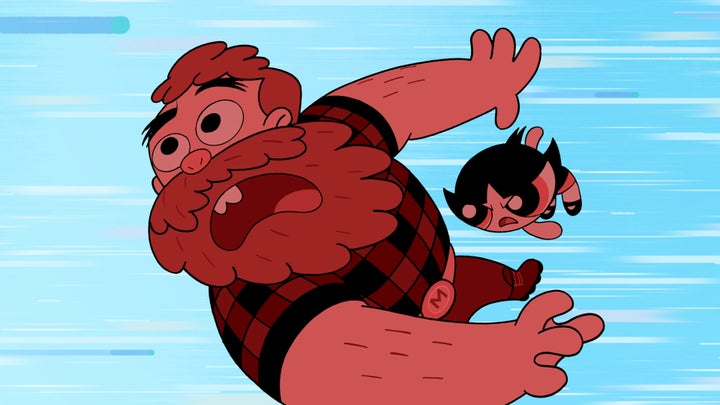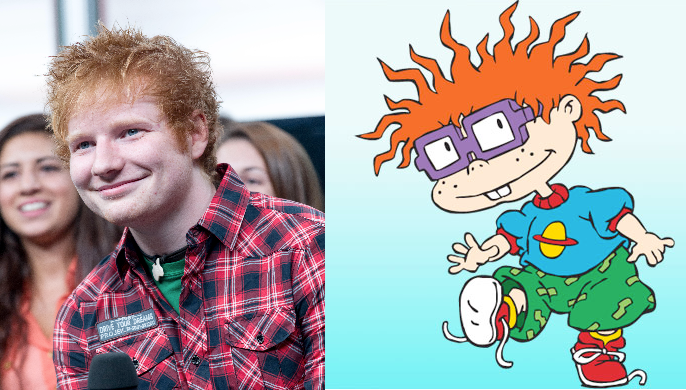
The three characters you now recognize as Blossom, Bubbles and Buttercup of "The Powerpuff Girls" made their debut in 1992 with a different, more aggressive team moniker -- "The Whoopass Girls."
Creator Craig McCracken was a college student at CalArts at the time he sent the original short to Cartoon Network, the company that ended up purchasing the show with the stipulation of a name change to widen the appeal.
This balance between "The Powerpuff Girls" being a kids show at the forefront with adult humor in the background continued throughout the series' run. Kids were supposed to miss the subtle sex jokes and sight gags, such as The Dude from "The Big Lebowski" standing on a street corner. But this hidden maturity allowed older audiences to appreciate the show, as well.
This ethos now continues with Cartoon Network's recent reboot of the series under executive producer Nick Jennings and co-executive producer Bob Boyle. Both have experience working on shows that have similarly attracted both young and adult fans, such as "Adventure Time," "Spongebob Squarepants" and "The Fairly Odd Parents."
Although McCracken is not involved with the revival, Jennings and Boyle wisely kept the core elements of the original show while choosing the right updates to make sure it feels relevant for 2016. The characters look almost identical to McCracken's original drawings, save for cosmetic changes such as the outlines being thinner to avoid a "logo" aesthetic, according to Jennings.
From the first few episodes that started airing in early April, the new, identically-named "Powerpuff" has already established itself as a worthy successor. If you grew up with the original, you finally have a chance to get the hidden adult humor and mature themes this time around.
To get a more definitive sense of how the show appeals to audiences of more ages than you'd think, The Huffington Post spoke with both Jennings and Boyle along with head writers Haley Mancini and Jake Goldman about their reboot.
The writers hide jokes for adults within the show.

Speaking about the writers' attempt to balance jokes for adults and kids in the same show, Mancini cited the original series' use of "fabulous innuendos" as an inspiration. Although Mancini felt as if the new team couldn't get away with quite the same-level of undertones this time around, these moments certainly still inform creative choices.
"I think there's something really special in making sure you have humor directed toward kids and then you layer it with humor directed toward adults," said Mancini over the phone.
A standout "adult" joke from the new series comes in the second episode when a villain (who Mancini voices) uses what's basically an Uber for monsters on her phone. A stereotypical thespian with a monster-esque body then answers the request in his car, does some traditional theater warmups and then bursts through the vehicle growing to the size of a skyscraper.
The other writer, Goldman, said that he grew up watching cartoons with his family and that there'd often be jokes only a parent in the room would understand. "When you rewatch it years later, it's just this gift that keeps on giving," said Goldman, to which Mancini added, "I think we get in several moments per episode that we always shake our heads and go, 'I can't believe that made it in.'"
Perhaps one of these instances is a villain named Manboy, who shows up in the sixth episode. The villain is a parody of recently in-vogue lumberjack manliness and controls an army that includes a large monster made out of timber and anthropomorphic steaks. Boyle, the creator of this character, said he was unaware of the term lumbersexual, although the other writers were familiar. The co-executive producer admitted, "It does seem rather contemporary."
"Ultimately, we're trying to make ourselves laugh," said Jennings. "Honestly, I forgot we were making it for little kids," added Boyle.
The show doesn't fear embracing feminism.

"One of my favorite things about this journey with the show is, as a woman, how far feminism has come since the last show ended," said Mancini on how she's approached writing the series.
"[Audiences] can just enjoy having three little girls that are leads and [the PPG] can be girly and they can be tough and they can be these well-rounded characters that don't have so much responsibility on their shoulders." Mancini continued, "It's just really fun to write for three real, little girls that can have faults and foibles."
At its heart, as Jennings put it, the show will always be about girls "that clobber monsters and try to do it all before bedtime." But that premise itself is progressive.
The staff behind the new Powerpuff characters felt lucky that feminism is integrated into pop cultural spaces far more than audiences permitted during the run of the original series. "I think girl superheroes were a bit of a novelty then," said Boyle. "Girls are really embracing their geekdom and I think it's also OK for boys to be into girl superheroes. That whole dynamic has changed from when [the show] first came out."
With their ambivalent ages, the Powerpuff superheroes can be both girls and women.

Although the true ages of the Powerpuff Girls appear to remain a mystery, Goldman did finally reveal to HuffPost that the characters are "kindergartners."
Still, the now iconic minimalism of the characters' design allows viewers to project roughly whatever young age they see fit.
Much like the similarly circular-shaped, if more foul-mouthed, "South Park" characters -- which the original series actually referenced with Blossom wearing Cartman's clothes in a sight gag -- the Powerpuff Girls can often appear much wiser than their years. (Also, to get into technicalities, the sisters came into the world fully-formed after their "father," Professor Utonium, created them in a lab. So standard aging metrics really don't apply to them.)
Kids and adults can find something to latch on to, a point not lost on both Mancini and Goldman who are young enough to have grown up with the show.
As a child, Mancini was perhaps the ideal target demographic. She would watch the series with two of her friends, and they ended up naming their friend group after the Powerpuff Girls since they matched the hair colors of the characters. Now older, she still feels an attachment to the crime-fighting gang and actively strives to balance her new desires for the girls with the ones she had as a kid.
"I'm a huge fan of the Powerpuff Girls, having grown up with it and being a girl," said Mancini. "We just wanted to keep the essence of what [McCracken did] and also bring it to a new generation." She continued, "There's no need to play completely to one group of people."

